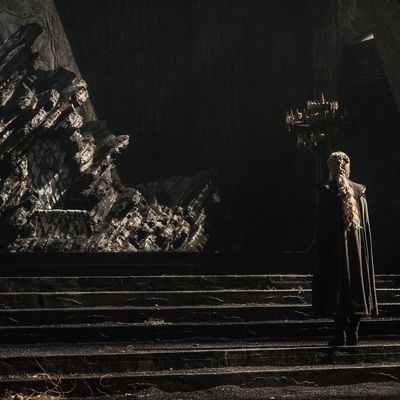
Spoilers ahead for the season-seven premiere of Game of Thrones.
After years of hoping, Game of Thrones fans finally got their wish: On Sunday night’s premiere, Daenerys Targaryen returned to Westeros, the land of her birth. And we mean that literally: Dany makes her triumphant entrance at Dragonstone, the ancient Targaryen island castle where she was born in the closing days of Robert’s Rebellion.
Dragonstone was the ancestral seat of the Targaryens, dating back to the days when the ancient empire of Valyria still ruled the known world with their armies of dragonriders. The Targaryens were a fairly middling house in Valyria until about 400 years before the events of Game of Thrones, when a Targaryen daughter named Daenys had a dream about a terrible cataclysm that was about to happen. That was enough for her father to pack up and move the family as far away as possible, which turns out to be a rocky island off the coast of Westeros. This proved to be the right move 12 years later when Valyria exploded, and suddenly, the Targaryens were the only dragonriders left in the entire world. The family sat tight in their island home for about 100 years, mostly staying away from the chaos that followed the collapse of the Valyrian empire. Then Dany’s ancestor, Aegon, decided, “What’s the point of having dragons if you aren’t going to conquer a continent with them?” And so, he and his two sisters used Dragonstone as a launch pad for their successful invasion of Westeros, which created the Seven Kingdoms as we know them today. Never say Dany doesn’t know her political symbolism.
You may recall that we’ve seen Dragonstone before: It was the seat of Stannis Baratheon in seasons two through four, during his “burn people and sit around glumly” phase. That’s because, in the years after Aegon’s conquest, Dragonstone was the traditional seat for Targaryen heirs to the throne, the same way that Wales is to British royals today. It was in that tradition that Robert Baratheon named his younger brother Stannis as Lord of Dragonstone. Stannis still took it as a slight because, one, he wanted Storm’s End, and two, that’s Stannis for you.
Now that we’ve gotten all that fascinating history out of the way, there’s another thing we should mention about Dragonstone: its architecture. Valyrian design was marked by a strange magical construction technique that let them liquefy stone and shape it however they liked; the Targaryens, who were not exactly known for being subtle, decided to make the entire castle shaped like a bunch of three-dimensional dragons. (The show has toned this down, but the Minecraft version is pretty fun.) Fittingly, Dragonstone was home to a bunch of Targaryen dragons, and the island was also known to contain a handful of wild dragons, as well as caches of dragon eggs. What can I say, it lives up to the name.
Most importantly to our characters’ current interests, Dragonstone is also home to large deposits of dragonglass, the obsidian-like substance that just so happens to be one of the only known materials that can kill White Walkers. (The other is Valyrian steel.) Stannis revealed this fact to Sam back in season five, and just in case our favorite aspiring maester forgot, he saw a map that conveniently reminded him in Sunday’s episode. Sam seems likely to pass that information onto Jon, and you know what that means: The last two Targaryens could be having a family reunion. We could think of no better place for it.





